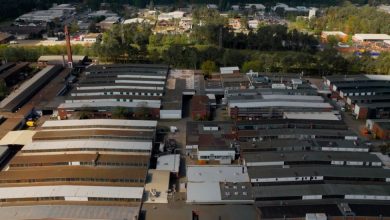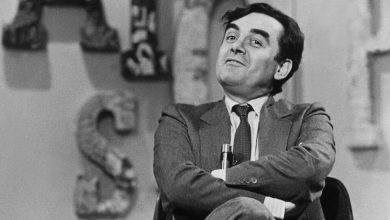Wages Rise at Fastest Pace Since 2002 as Inflation Continues to Run Hot

Inflation came in strong and wage growth remained elevated at the end of 2021, setting the stage for a challenging economic year in which the Federal Reserve and White House will try to maintain momentum in the job market while wrestling price gains under control.
The personal consumption expenditures index, the Fed’s preferred inflation gauge, came in at 5.8 percent in December, up from 5.7 percent the prior month. That beat out the prior month to become the fastest pace since 1982.
Inflation is moderating somewhat on a monthly basis, but its still-high annual readings come at a moment when pay is picking up briskly. While robust wage growth is good news for workers, it also increases the risk of sustained high inflation: Companies may raise prices to try to cover rising labor costs.
The Employment Cost Index, a measure of pay and benefits the Fed watches closely, picked up by 1 percent in the final quarter of 2021 from the prior year. While that was less of a gain than the 1.2 percent economists in a Bloomberg survey had forecast, it capped a robust year of increases: The gauge climbed 4 percent in the year through the fourth quarter, with its wages and salaries measure picking up by 4.5 percent.
Understand Inflation in the U.S.
- Inflation 101: What is inflation, why is it up and whom does it hurt? Our guide explains it all.
- Your Questions, Answered: We asked readers to send questions about inflation. Top experts and economists weighed in.
- What’s to Blame: Did the stimulus cause prices to rise? Or did pandemic lockdowns and shortages lead to inflation? A debate is heating up in Washington.
- Supply Chain’s Role: A key factor in rising inflation is the continuing turmoil in the global supply chain. Here’s how the crisis unfolded.
That marked the fastest pace of increase for both the overall compensation and the wages and salaries measure since the data series started two decades ago.
Price gains are eating away at consumer confidence even as wages rise, making inflation a political liability for the Biden administration and Democrats during a midterm election year. While the White House has taken steps aimed at relieving pressure on choked supply chains, the job of slowing down demand to bring prices under control rests primarily with the Fed.
The Fed’s policymakers have signaled that they will likely begin to raise interest rates at their March meeting as they try to prevent today’s quick price increases from becoming a more permanent feature of the economic landscape. Markets are nervously eyeing the Fed’s next steps, trying to gauge how much it will raise rates and how rapidly. Higher borrowing costs could slow down economic growth and lower stock prices, taking some of the buoyancy out of America’s expansion.
Economists do expect inflation to fade this year, though tangled supply chains make it difficult to gauge when that will happen. The world’s trade system remains under pronounced stress, based on various measures — including one produced by the Federal Reserve Bank of New York that incorporates backlogs, delivery times and inventories.
Inflation has sped up as people buy more goods, aided by repeated government relief checks and other federal benefits. The world’s factories and shipping lines have struggled to keep up with demand, resulting in rising prices for cars, lumber and clothing.
Rents have also begun to pick up recently, a sign that price gains are broadening and may last longer than economists had anticipated. Rising food and gas costs may offer less insight into the future, given how much prices in those categories bounce around, but they are making this a painful moment for households.
As inflation uncertainty lingers and another wave of virus prevents a return to normal life, several measures of consumer confidence have shown that people are becoming less optimistic. The University of Michigan survey has shown sentiment faltering as prices have risen, and the Conference Board’s index ticked down in January.
“You have very high inflation, so people are seeing an erosion of their purchasing power,” said Dana M. Peterson, chief economist at The Conference Board, noting that the resurgent virus is also to blame. “People will have higher confidence once we’re beyond Omicron.”
Inflation F.A.Q.
What is inflation? Inflation is a loss of purchasing power over time, meaning your dollar will not go as far tomorrow as it did today. It is typically expressed as the annual change in prices for everyday goods and services such as food, furniture, apparel, transportation and toys.
What causes inflation? It can be the result of rising consumer demand. But inflation can also rise and fall based on developments that have little to do with economic conditions, such as limited oil production and supply chain problems.
Where is inflation headed? Officials say they do not yet see evidence that rapid inflation is turning into a permanent feature of the economic landscape, even as prices rise very quickly. There are plenty of reasons to believe that the inflationary burst will fade, but some concerning signs suggest it may last.
Is inflation bad? It depends on the circumstances. Fast price increases spell trouble, but moderate price gains can lead to higher wages and job growth.
How does inflation affect the poor? Inflation can be especially hard to shoulder for poor households because they spend a bigger chunk of their budgets on necessities like food, housing and gas.
Can inflation affect the stock market? Rapid inflation typically spells trouble for stocks. Financial assets in general have historically fared badly during inflation booms, while tangible assets like houses have held their value better.
Fed officials and Wall Street economists alike expect price gains to fade this year, but it is not clear how much or how quickly they will do so. The central bank forecast 2.6 percent inflation by the end of the year as of its December meeting, but Jerome H. Powell, the Fed chair, said this week that the situation has probably slightly worsened since then.
“We are attentive to the risks that persistent real wage growth in excess of productivity could put upward pressure on inflation,” Mr. Powell said during a news conference on Wednesday.
Mr. Powell had in December specifically cited the previous Employment Cost Index reading — which came in high during the third quarter — as one reason that the Fed had decided to shift from stoking growth to preparing to fight back if inflation becomes long-lasting.
The fact that the measure did not pick up as sharply as expected in the final quarter of the year could give investors some confidence that the central bank’s policy-setting group, the Federal Open Market Committee, will not further speed up its plans to withdraw economic help.
“With labor participation creeping higher, and measures of excess demand flattening in recent months, it is reasonable to think that wage growth is unlikely to re-accelerate dramatically,” Ian Shepherdson, chief economist at Pantheon Macroeconomics, wrote following the release. “In the meantime, this report eases the immediate pressure on the F.O.M.C. to act aggressively.”
Omair Sharif, founder of Inflation Insights, wrote in a research note following the release that a slowdown in financial services incentive pay was a big driver of the moderation in wage and salary increases for private workers.
“Meanwhile, inflation continued to hammer wage growth,” he wrote, noting that inflation had eaten away at pay most in fields including education and manufacturing.



